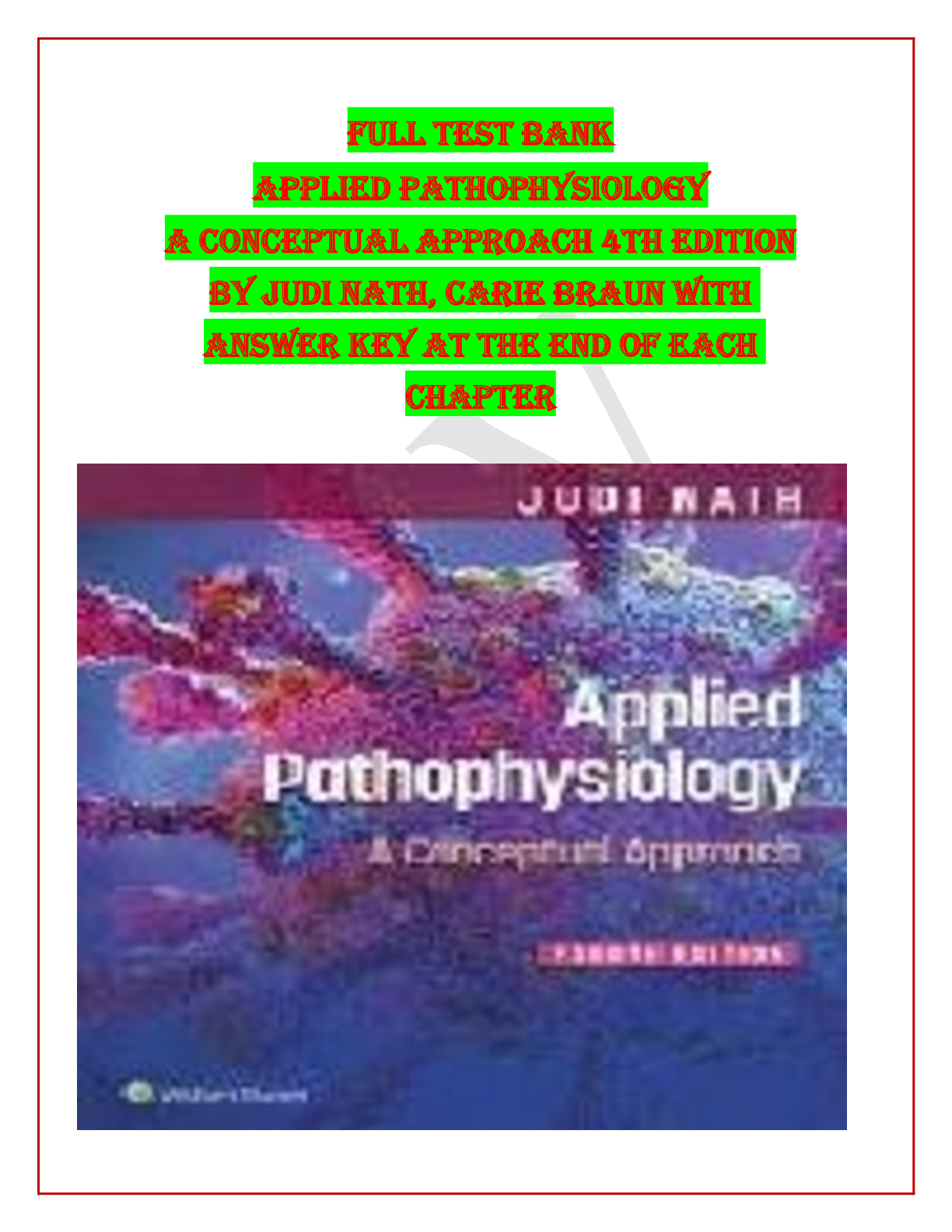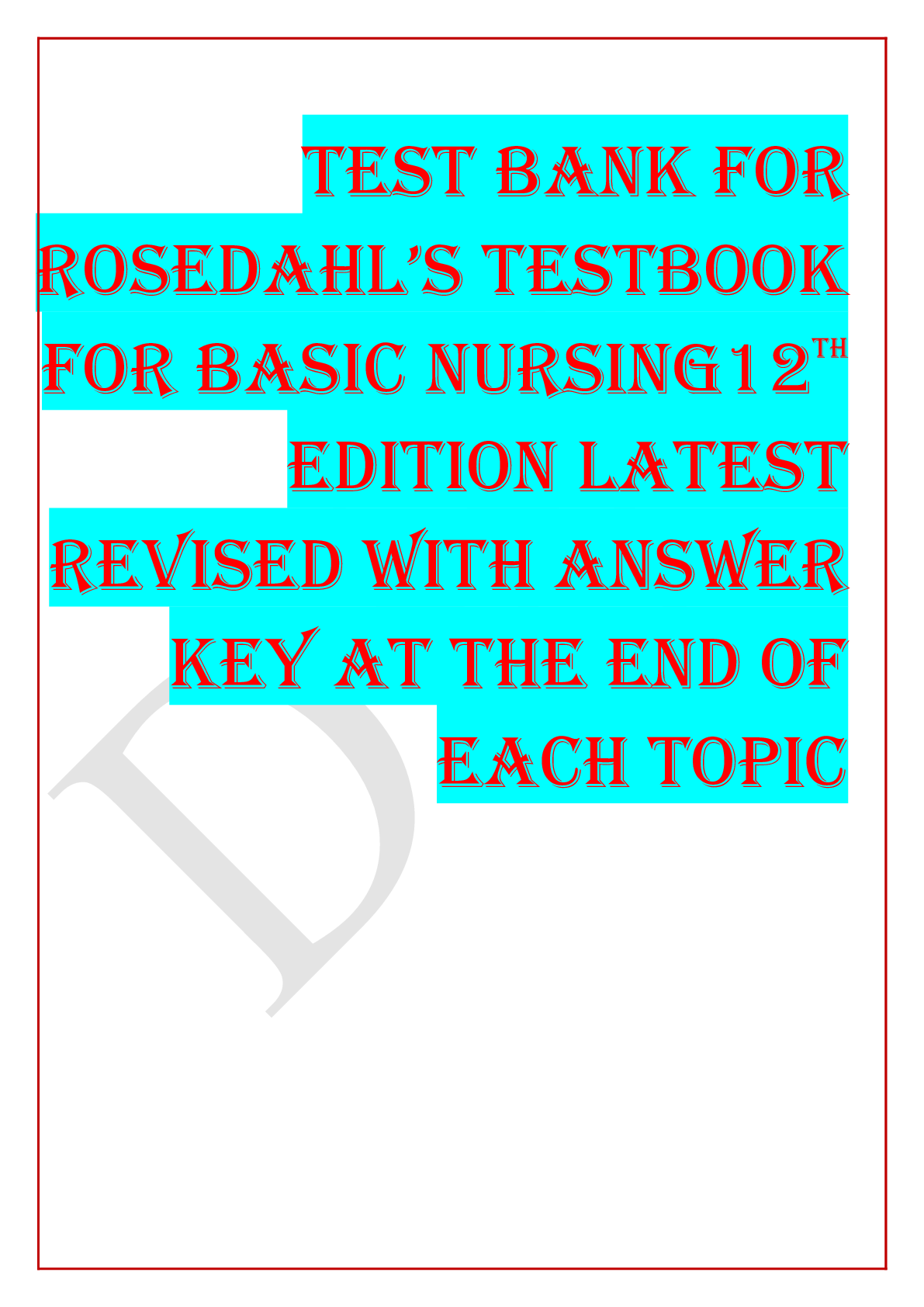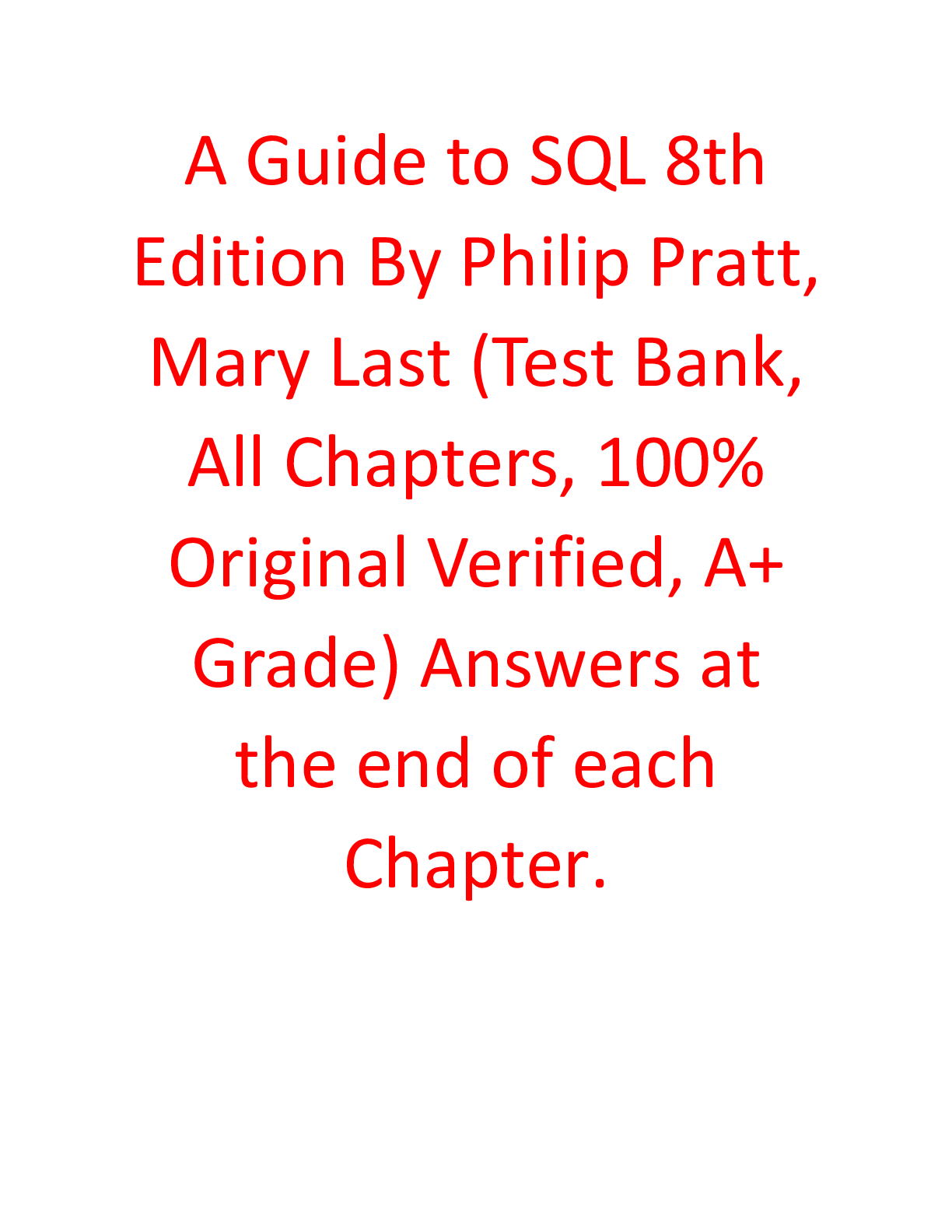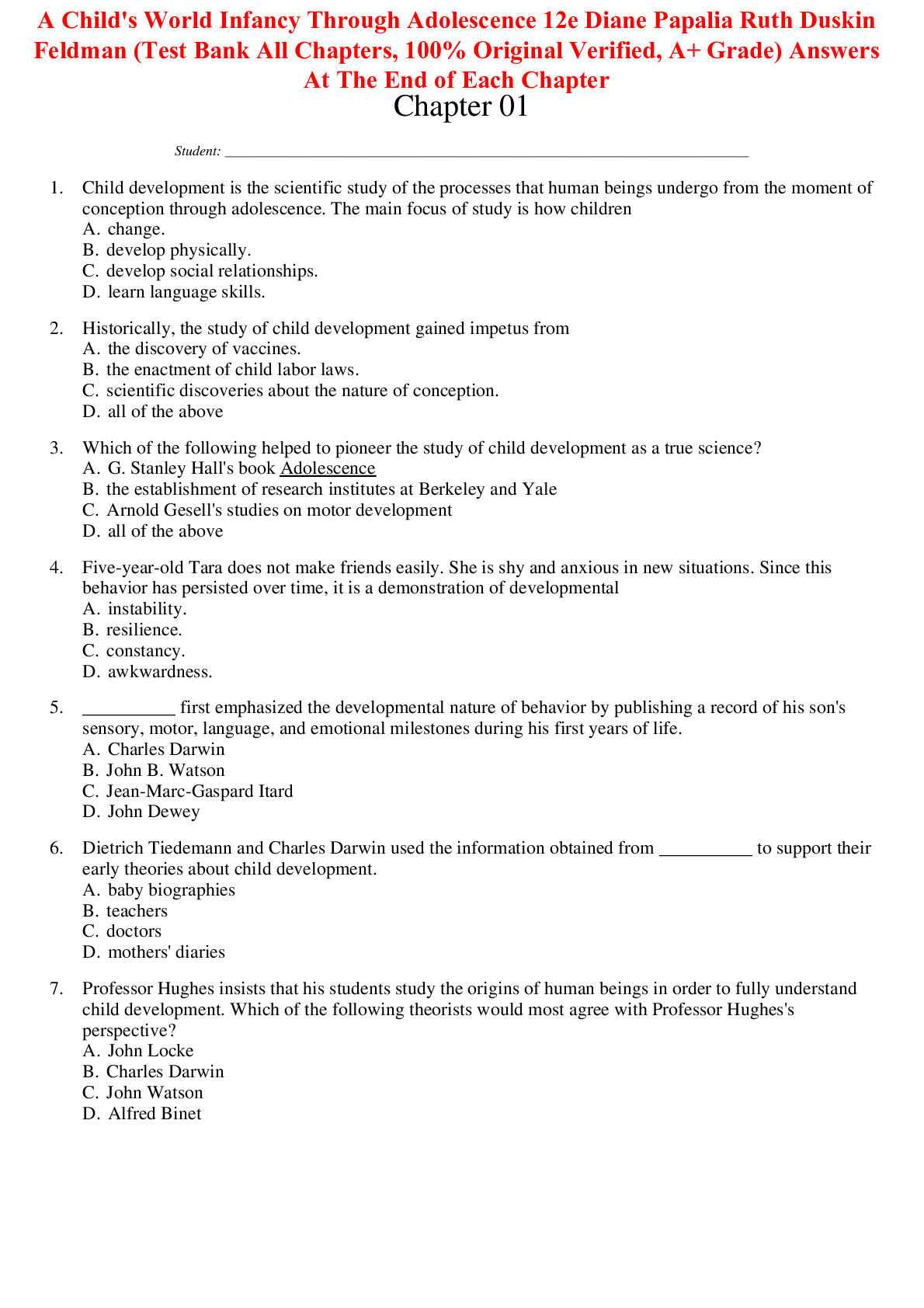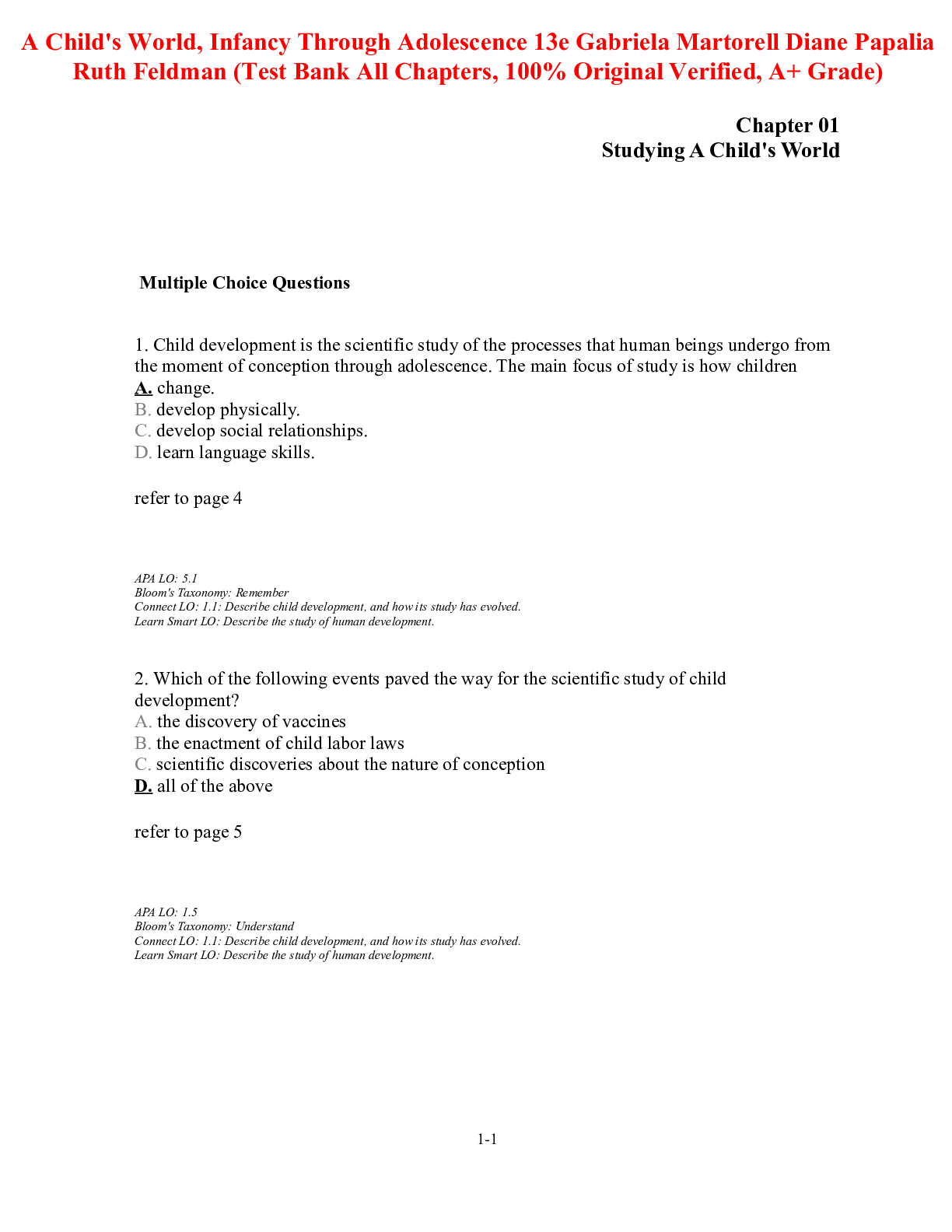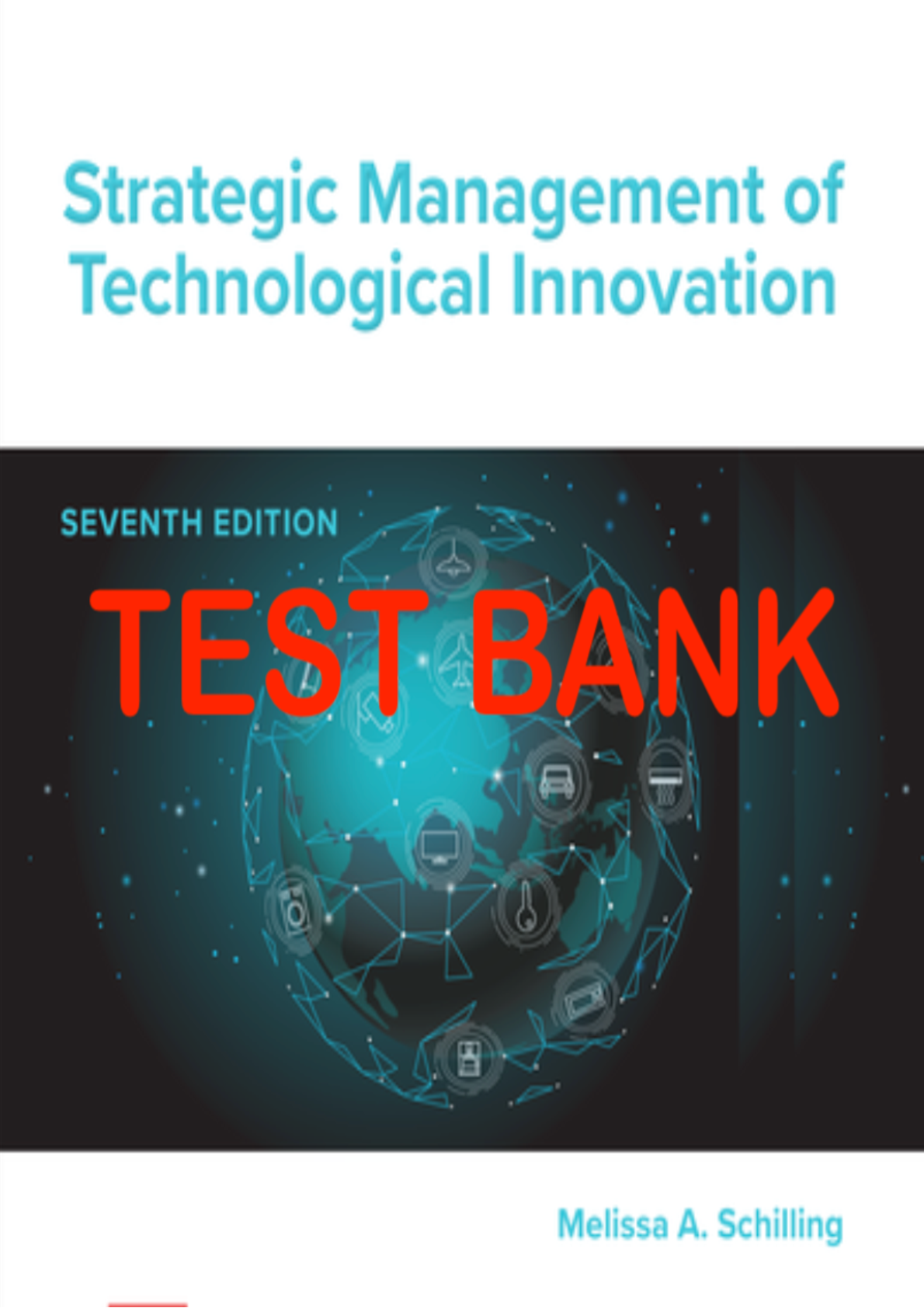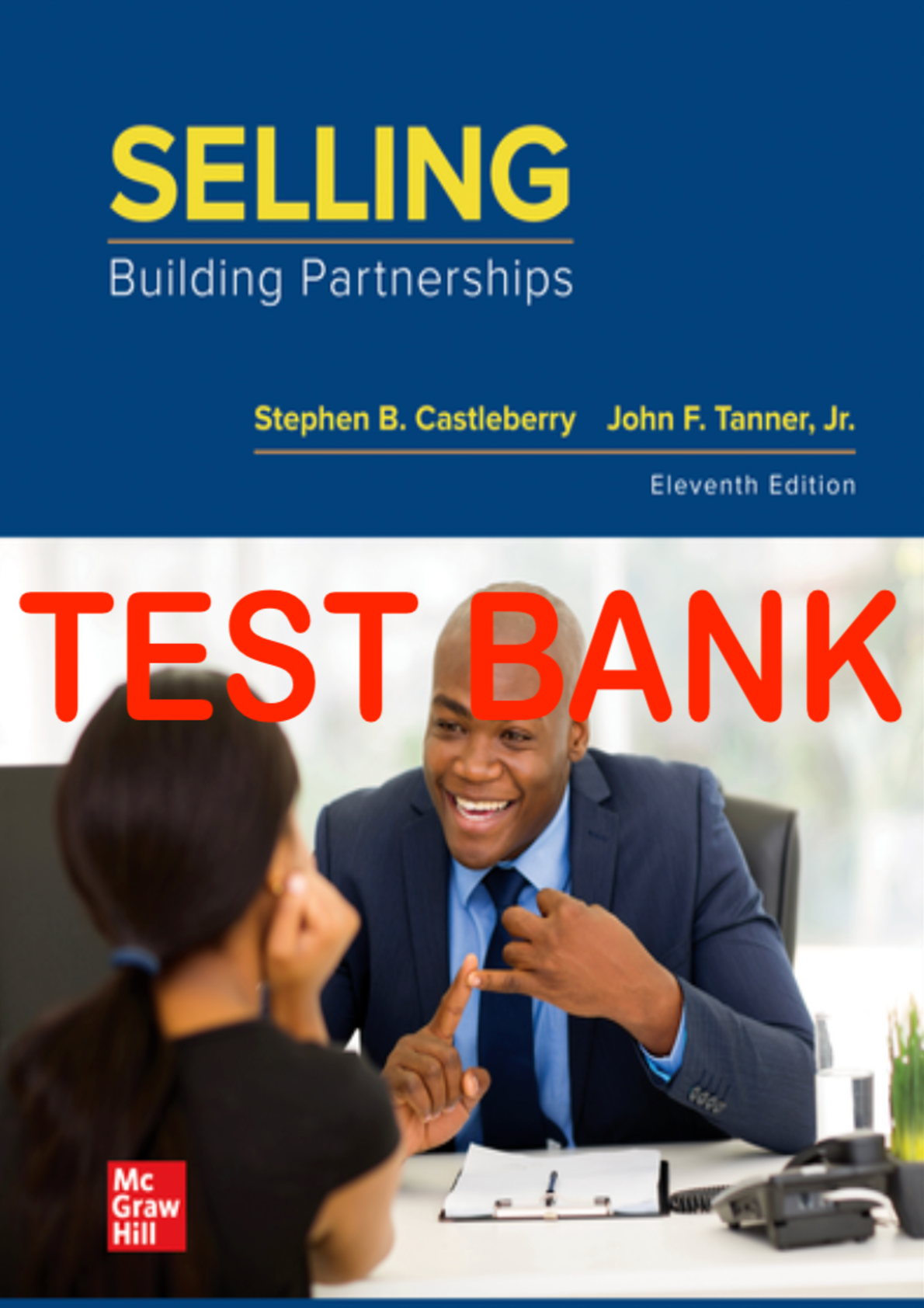Education > TEST BANKS > TESTBANK For A Child's World Infancy Through Adolescence 12e Diane Papalia Ruth Duskin Feldman, Answ (All)
TESTBANK For A Child's World Infancy Through Adolescence 12e Diane Papalia Ruth Duskin Feldman, Answers At The End of Each Chapter
Document Content and Description Below
TESTBANK For A Child's World Infancy Through Adolescence 12e Diane Papalia Ruth Duskin Feldman, Answers At The End of Each Chapter-1. Child development is the scientific study of the processes that hu... man beings undergo from the moment of conception through adolescence. The main focus of study is how children A. change. B. develop physically. C. develop social relationships. D. learn language skills. 2. Historically, the study of child development gained impetus from A. the discovery of vaccines. B. the enactment of child labor laws. C. scientific discoveries about the nature of conception. D. all of the above 3. Which of the following helped to pioneer the study of child development as a true science? A. G. Stanley Hall's book Adolescence B. the establishment of research institutes at Berkeley and Yale C. Arnold Gesell's studies on motor development D. all of the above 4. Five-year-old Tara does not make friends easily. She is shy and anxious in new situations. Since this behavior has persisted over time, it is a demonstration of developmental A. instability. B. resilience. C. constancy. D. awkwardness. 5. first emphasized the developmental nature of behavior by publishing a record of his son's sensory, motor, language, and emotional milestones during his first years of life. A. Charles Darwin B. John B. Watson C. Jean-Marc-Gaspard Itard D. John Dewey 6. Dietrich Tiedemann and Charles Darwin used the information obtained from to support their early theories about child development. A. baby biographies B. teachers C. doctors D. mothers' diaries 7. Professor Hughes insists that his students study the origins of human beings in order to fully understand child development. Which of the following theorists would most agree with Professor Hughes's perspective? A. John Locke B. Charles Darwin C. John Watson D. Alfred Binet 8. Adolescence has been considered a separate stage of development since A. early in the fifteenth century. B. the twentieth century. C. Freud mentioned it in his writings on child development. D. Bandura mentioned it in his theory on child development. 9. Who was the first to identify adolescence as a separate stage of development? A. John Watson B. G. Stanley Hall C. Arnold Gesell D. Lewis Terman 10. Marsha is taking a class in human development. This class addresses the study of humans A. from conception to adolescence. B. throughout childhood. C. from adolescence through older adulthood and death. D. from conception through older adulthood and death. 11. designed a longitudinal study that traced the development of unusually intelligent children. A. G. Stanley Hall B. John Dewey C. Jean Piaget D. Lewis M. Terman 12. Human development studies are based on which of the following ideas? A. There is little continuity over the life span. B. Development occurs early in life, not during adulthood. C. Every portion of the life span is influenced by earlier events and will in turn affect later events. D. The domains of development are not interrelated. 13. Physical, cognitive, psychosocial development are what social scientists call the three of the self. A. aspects B. domains C. both of the above D. none of the above 14. Annette started crawling, then standing, and is now taking her first steps. This aspect of Annette's development is best categorized as A. physical development. B. cognitive development. C. psychosocial development. D. none of the above 15. When she was one year old, Suzi had a vocabulary of 10 words. Now, at two years of age, she has a vocabulary of over 100 words. This reflects a(n) developmental change. A. physical B. cognitive C. psychosocial D. neurological 16. Which of these characteristics describe psychosocial development occurring during the adolescent stage of development? A. Altruism, aggression, and fearfulness are common B. Self-awareness develops C. Search for identity predominates D. Self-esteem is global 17. In order to acquire a thorough understanding of the nature of human development over time, scientists have divided the lifespan into five periods. These divisions A. are based on clear-cut development criteria. B. are based on cognitive differences. C. are arbitrary and approximate. D. each cover 10-year periods. [Show More]
Last updated: 9 months ago
Preview 5 out of 305 pages

Loading document previews ...
Buy this document to get the full access instantly
Instant Download Access after purchase
Buy NowInstant download
We Accept:

Reviews( 0 )
$16.50
Can't find what you want? Try our AI powered Search
Document information
Connected school, study & course
About the document
Uploaded On
Oct 18, 2024
Number of pages
305
Written in
Additional information
This document has been written for:
Uploaded
Oct 18, 2024
Downloads
0
Views
19

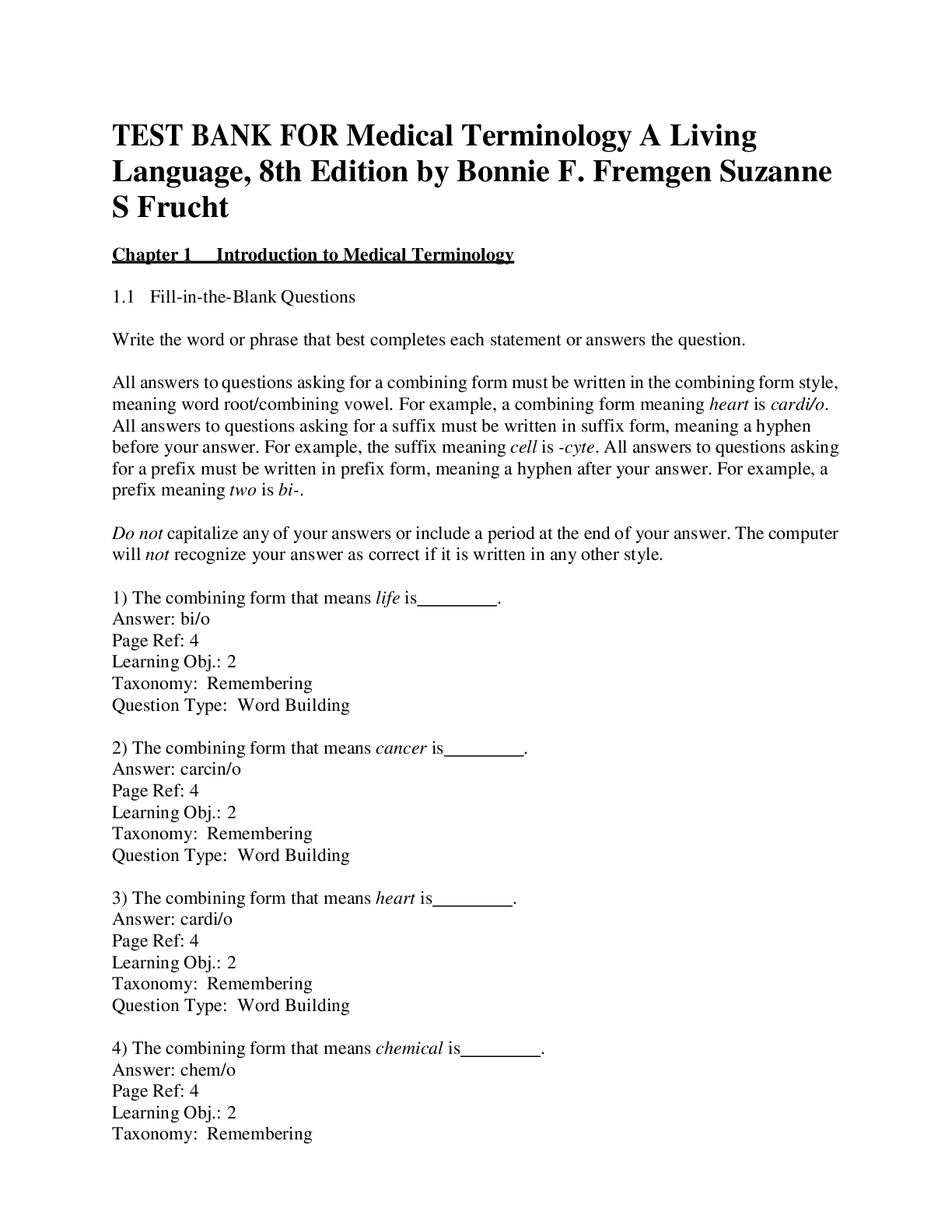
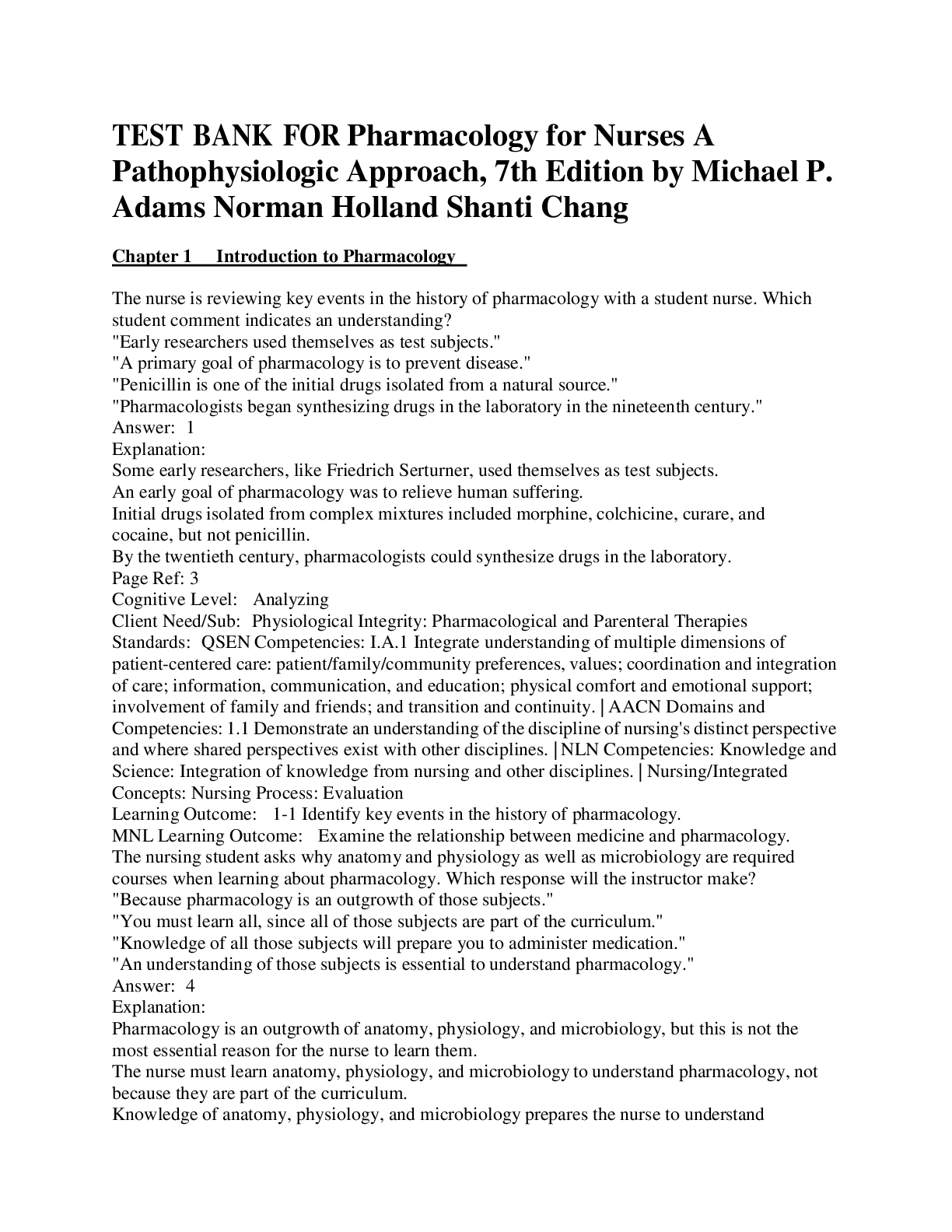

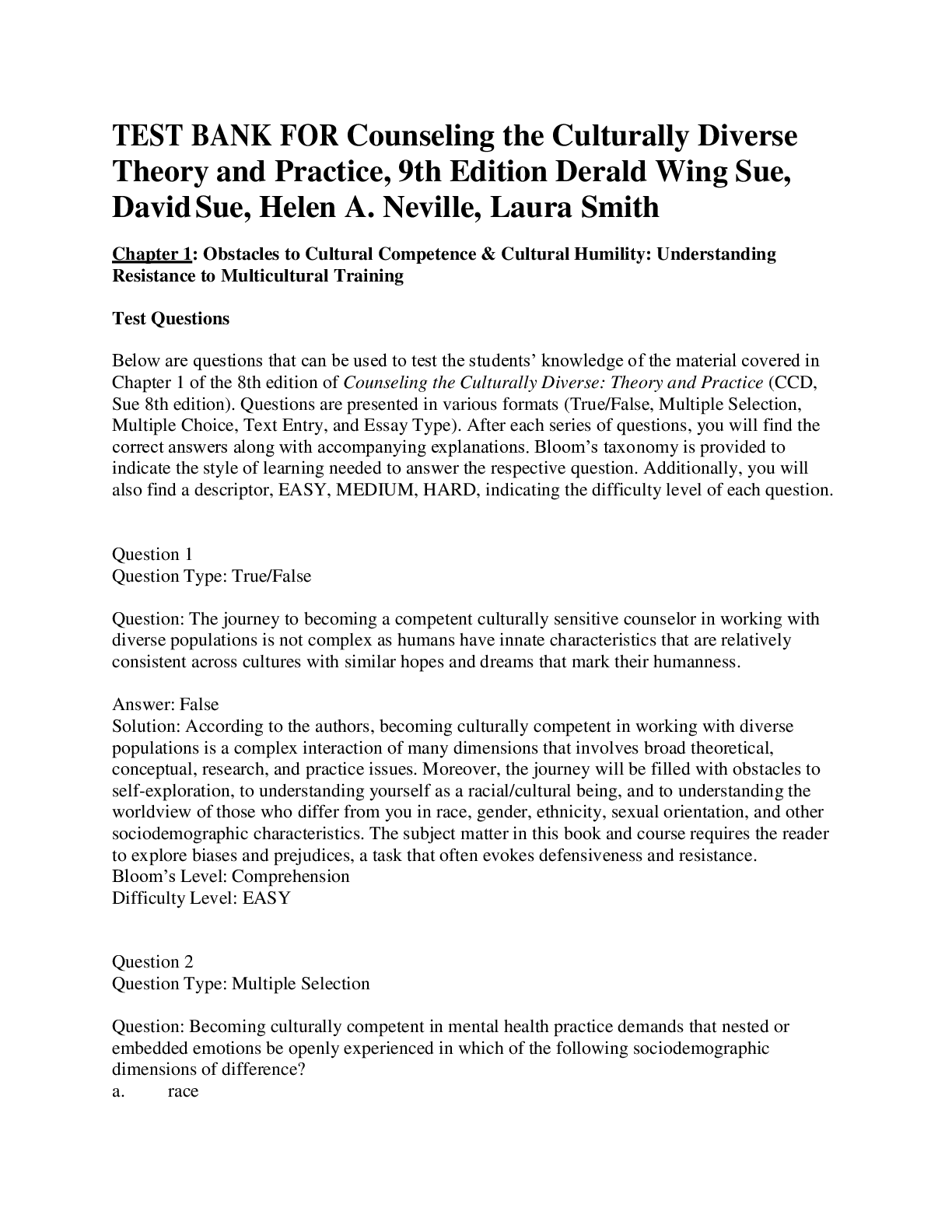
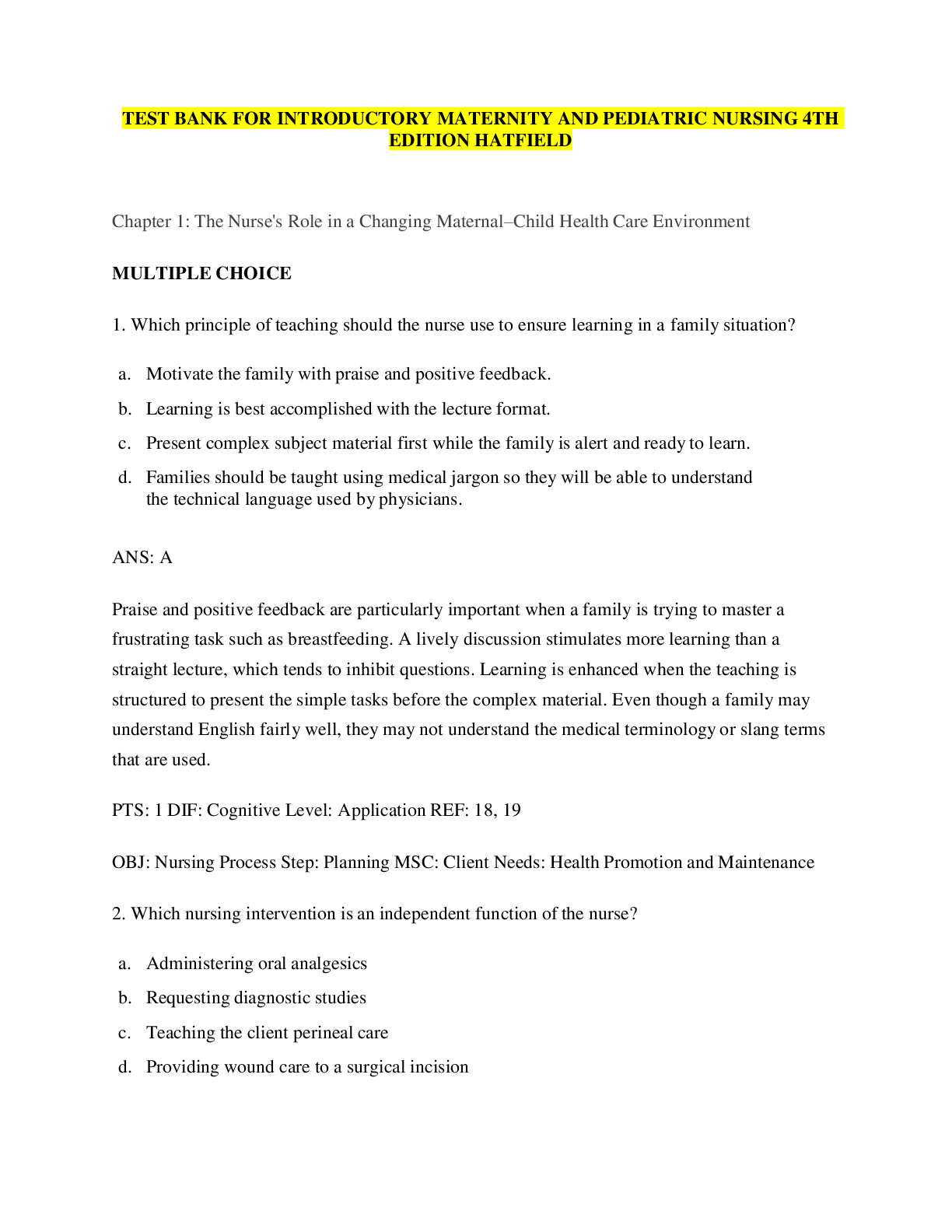

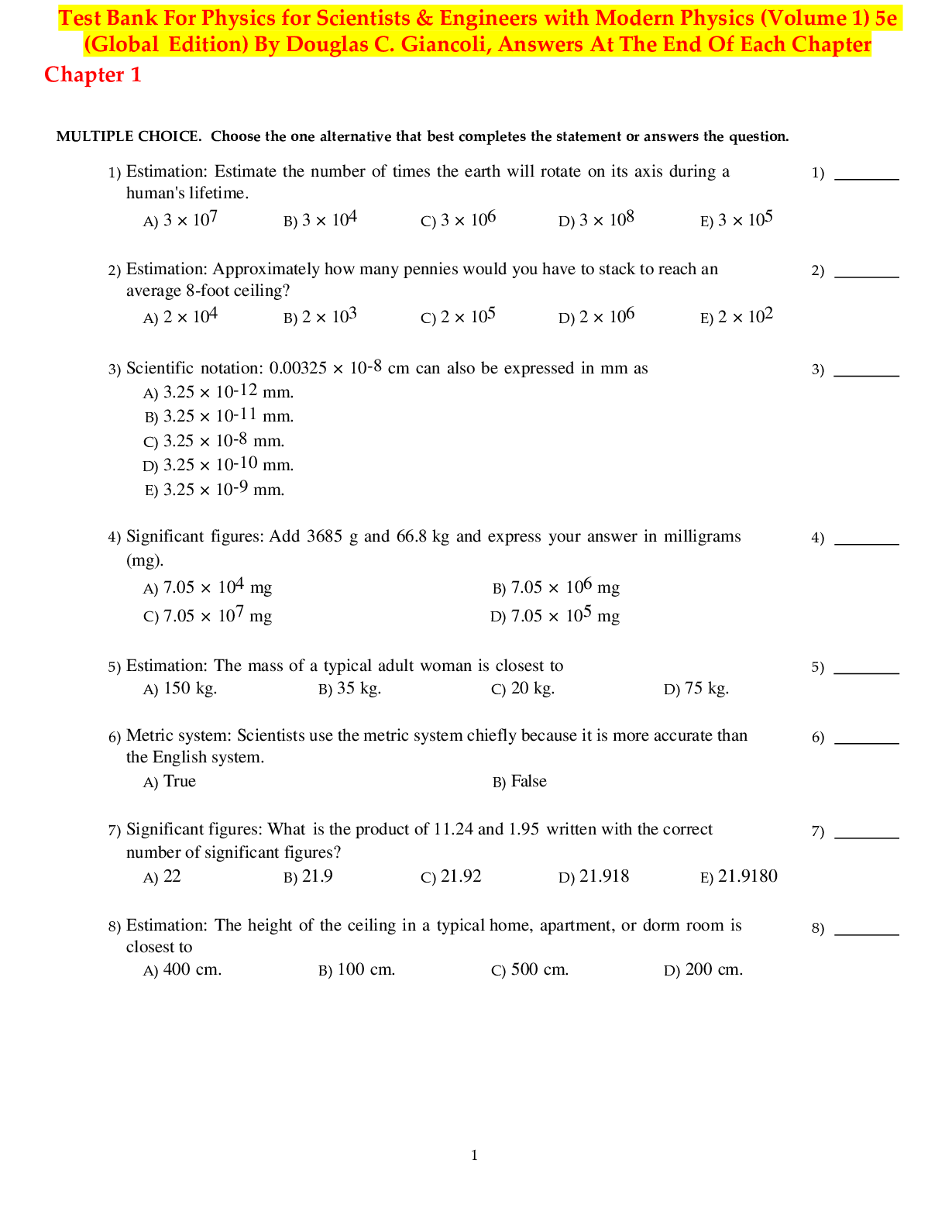

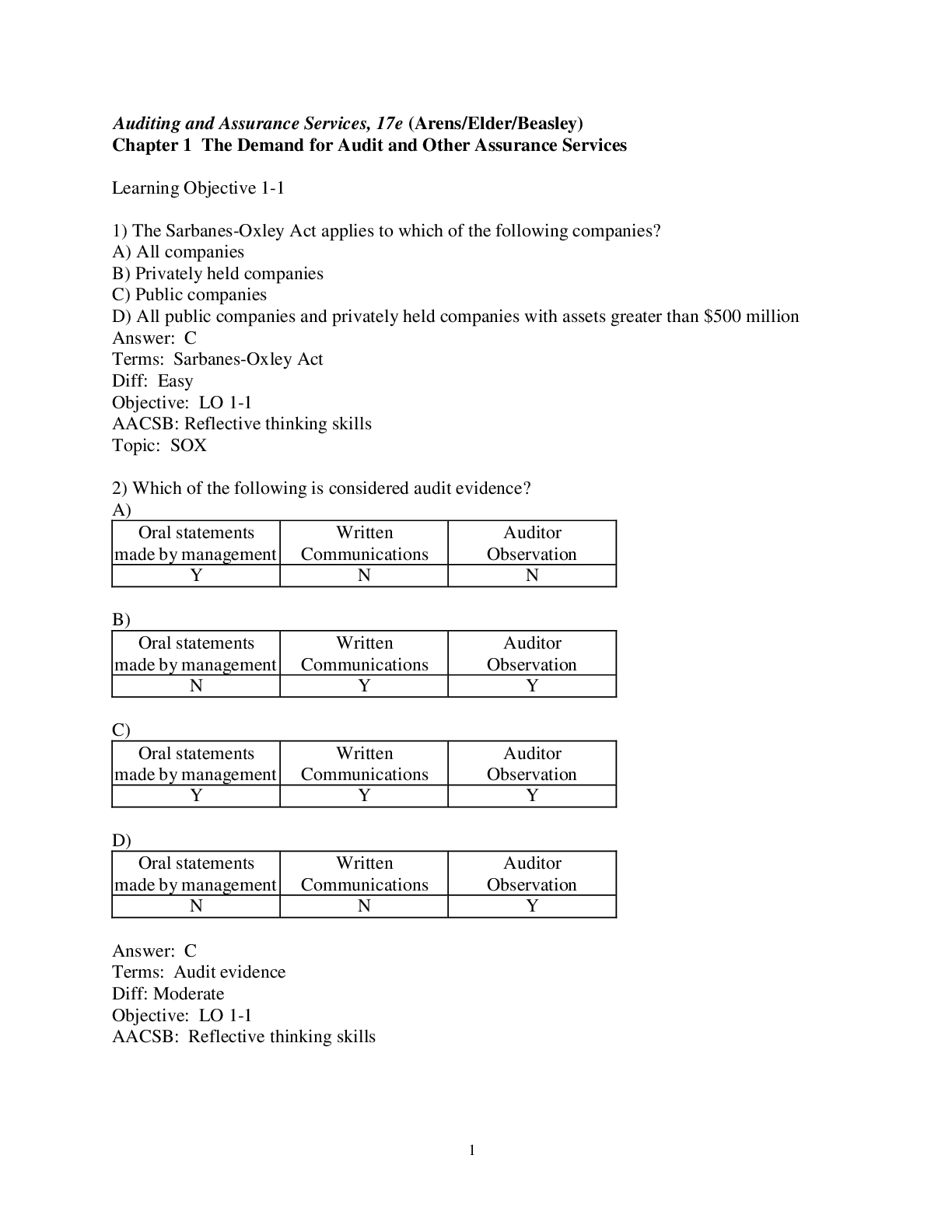
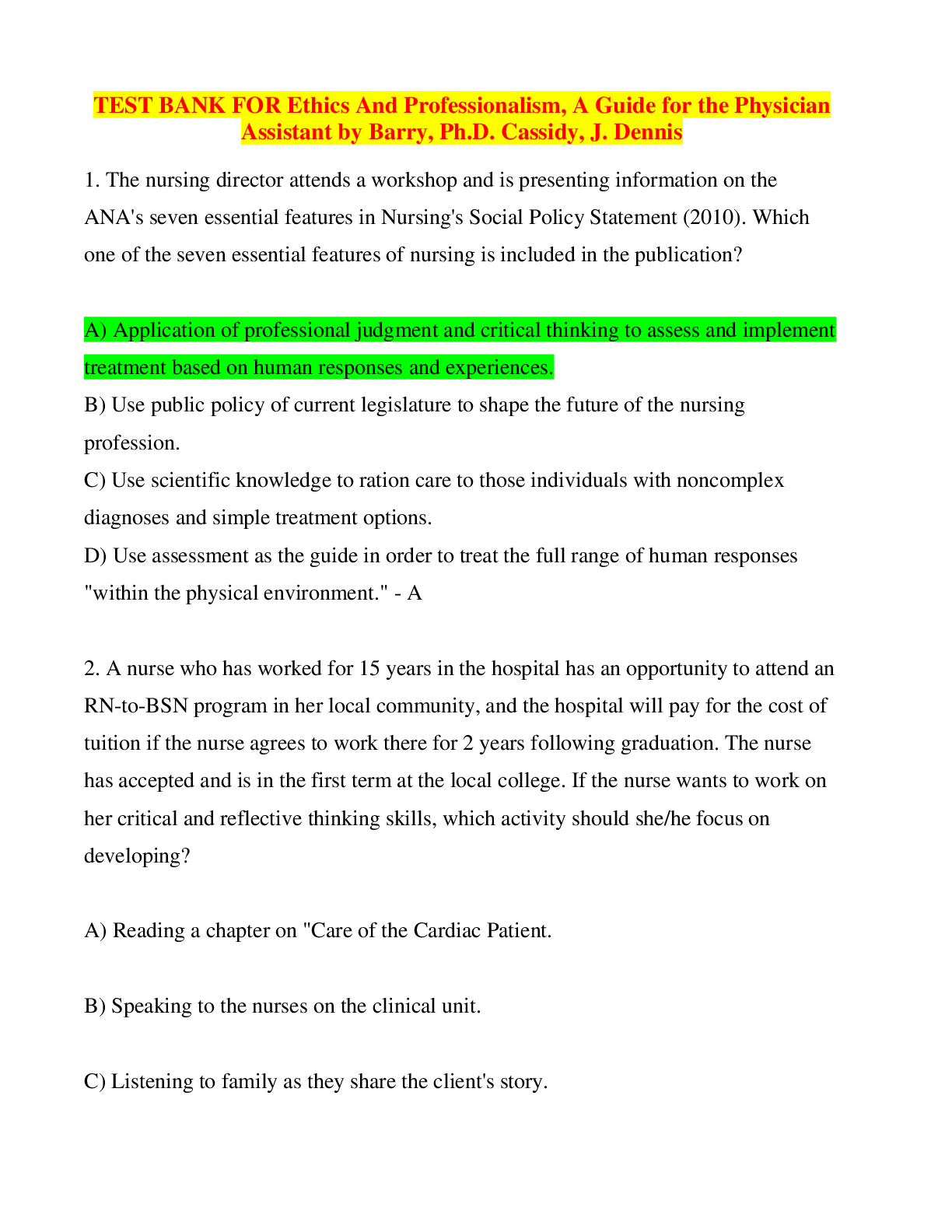

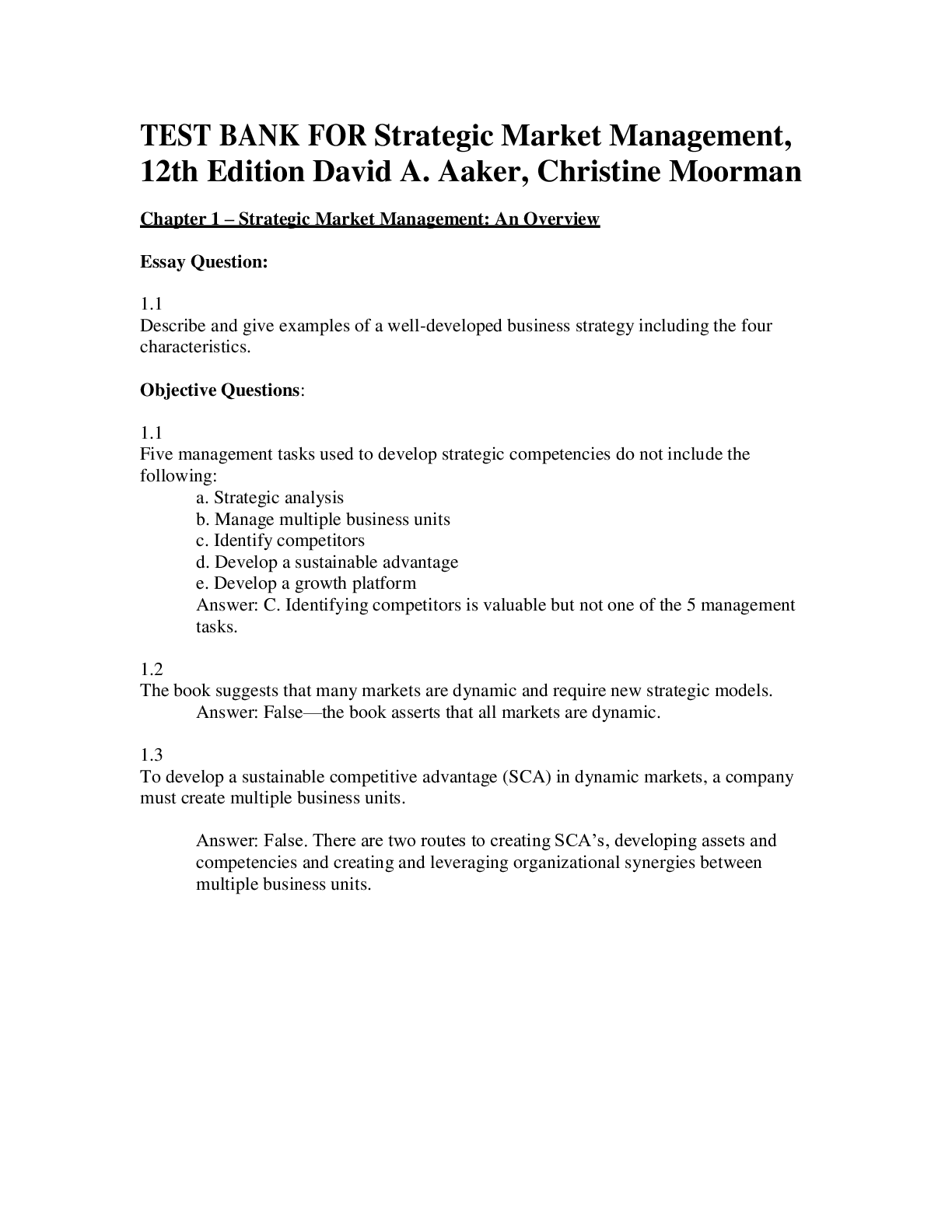
.png)
